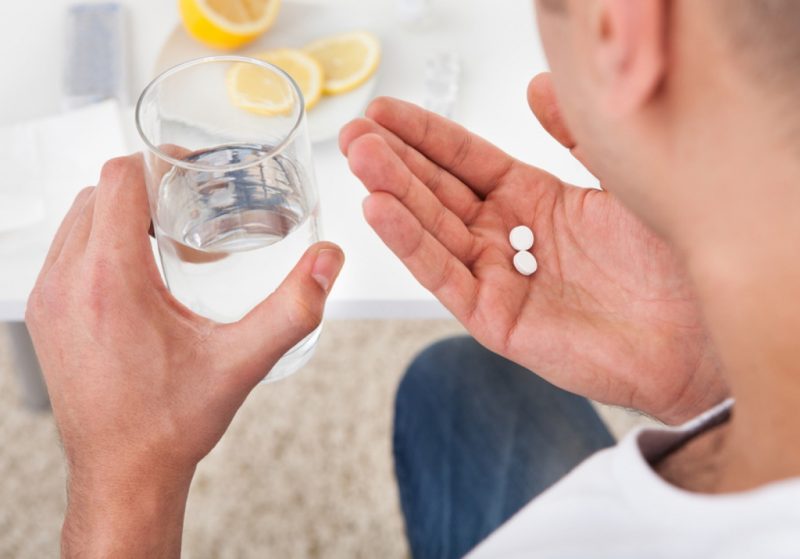Hypertension and the associated damage to the liver, kidneys, and brain are the scourge of our time. The number of deaths from high blood pressure significantly exceeds the mortality from AIDS and approaches the indicators characteristic of oncology. One of the means of combating hypertension is ACE inhibitors. The list of drugs in this group and their mechanism of action are described below.
Material Content:
ACE inhibitors - what is it?
Speaking about what ACE inhibitors are, one cannot help but recall how the system for maintaining blood pressure works. Regulation of blood pressure in the human body is carried out, including due to the angiotensin system.

The latter works as follows:
- From plasma beta-globulins, in particular from angiotensinogen, angiotensin I is formed under the action of enzymes (renin). It does not affect vascular tone and remains neutral.
- Angiotensin I is exposed to angiotensin converting enzyme - ACE.
- Angiotensin II is formed - a vasoactive peptide that can affect the tone of the vascular wall by irritating angiotensin-sensitive receptors.
- There is a narrowing of blood vessels.
- Under the influence of active angiotensin, norepinephrine (increases vascular tone), aldosterone (promotes the accumulation of sodium and potassium ions), antidiuretic hormone (contributes to an increase in fluid volume in the bloodstream) are released.
- If the above process is too intense, a person develops hypertension. Blood pressure can reach critical values.Against this background, hemorrhagic stroke develops, myocardial infarction (the formation of a site of necrosis on the heart), renal glomeruli are affected.
The above process, if it proceeds too intensively and the patient develops hypertension, can be slowed down. For this, special medicines are used - ACE inhibitors. Their action is based on the cessation of the synthesis of angiotensin converting enzyme and the transition of angiotensin I to angiotensin II. The above process is blocked at the initial stage. Excessive narrowing of the peripheral vessels does not occur.
Note: there are other ways of formation of angiotensin II, not associated with angiotensin-converting enzyme. This does not completely block the vasoactive substance and makes ACE inhibitors limited effective in the fight against hypertension.
The latest generation drugs list
The drugs of the latest generation are distinguished by good tolerance, complex prolonged action, ease of use and minimal contraindications.

These include:
- Fosinopril - A distinctive feature of the drug is that its excretion equally occurs through the kidneys and liver. This reduces the load on both organs and allows you to use the tool for renal or liver failure. It is a prodrug in the body turns into active fosinoprilat. 10 mg is prescribed once a day.
- Spirapril - It is characterized by a low frequency of occurrence of side effects and high efficiency. The drug is prescribed for 6 mg, 1 time per day. Therapy should be started no earlier than 3 days after the cancellation of diuretics. If necessary, this indication can be ignored. In this case, the patient should be monitored in the first 6 hours after the start of treatment. High risk of orthostatic reactions.
- Omapatrilat - a complex drug that simultaneously blocks the production of ACE and neutral endopeptidase - an enzyme that, along with angiotensin, is involved in increasing blood pressure. Appointed once a day, is one of the best representatives of the group of angiotensin-converting enzyme inhibitors to date.
Drug classification
The list of ACE inhibitors includes drugs of various groups. Their classification is carried out by chemical structure, pharmacological properties and origin.

On the chemical structure of the drug are:
- sulfhydryl (captopril);
- carboxyalkyl (enalapril);
- phosphoryl (fosinopril);
- hydroxamic (idrapril).
The described classification is relevant only for specialists engaged in in-depth study of the properties of the drugs in question. Information to the practitioner about the presence of a particular chemical group in the product does not bring tangible benefits. The separation of ACE inhibitors by pharmacological properties is of greater practical importance:
| Class I | Class II Lipophilic prodrugs | Class III | Class IV | ||
|---|---|---|---|---|---|
| II A | II B | II C | |||
| Lipophilic products | Renal elimination | Two ways to eliminate | Hepatic elimination | Hydrophilic agents | Dual metalloprotease inhibitors |
| Captopril | Benazepril | Fosinopril | Spirapril | Lisinopril | Alatriopril |
ACE inhibitors are divided into natural and synthetic by origin. Natural medicines include first-generation drugs created on the basis of thermotide - the poison of a South American snake. They were toxic, ineffective and not widely used. Synthetic products are used everywhere.
Conventionally, they can be divided into 3 generations:
- I generation - captopril and other drugs containing a sulfhydryl group.
- II generation - carboxylic type drugs, which include lisinopril, ramipril.
- III generation - a new type of drug, which includes the phosphoryl group. One of the famous representatives of the third generation is fosinopril.
It should be noted that the generation of the drug does not always indicate the degree of its effectiveness. There are cases when only obsolete drugs helped a patient with persistent hypertension. New developments did not have the expected effect.
Indications for use

ACE inhibitors have many pharmacological effects and are prescribed to patients with the following pathology:
- hypertension of any type (renovascular, malignant, resistant);
- congestive heart failure;
- diabetic nephropathy;
- chronic jade;
- myocardial infarction;
- prevention of repeated heart necrosis.
When prescribing captopril and its analogues, patients with the corresponding diseases manage to achieve such effects as reducing the load on the heart, improving blood circulation in the pulmonary circle and easing breathing, lowering blood pressure, and decreasing renal vascular resistance. In addition, ACE inhibitors are used in conjunction with nitrates to enhance the effect of the latter.
Possible side effects
Most synthetic preparations belonging to the group under consideration are well tolerated. Side effects are rare and almost always associated with excess therapeutic doses or a violation of the regimen of drugs.

In this case, the following reactions occur in patients:
- tachyarrhythmia;
- headache;
- loss of appetite;
- taste violation;
- dry cough;
- nausea;
- diarrhea;
- muscle spasms;
- vomiting
Perhaps the development of allergic reactions proceeding as a urticaria. In rare cases, patients have angioedema, including spreading to the respiratory tract. To prevent situations involving a risk to the patient’s life, it is recommended that the first and second tablets be taken in the presence of a doctor or nurse.
Modern drugs that block ACE production are difficult to attribute to one pharmacological group. Most new drugs entering the market have a complex effect and affect several mechanisms of raising blood pressure at once.
Which is better: sartans or ACE inhibitors?
Patients with hypertension often ask their doctor what is better, sartans or ACE inhibitors. To answer it, you need to know the features of the action of both pharmacological groups. As already mentioned, inhibitors act exclusively on the angiotensin-converting enzyme, preventing the formation of angiotensin II from angiotensin I.
The synthesis of a vasoactive substance occurs not only under the influence of ACE. Components take part in its formation, it is impossible to completely stop the production of which in a pharmacological way. This necessitates blocking not ACE, but directly receptors that are sensitive to the action of angiotensin, which is the effect of sartans - a relatively new pharmacological group, which includes substances such as telmisartan, losartan, valsartan.

In answer to the question asked at the beginning of this section, the following should be said: sartans are modern drugs that are highly effective and able to combat the most severe forms of hypertension. In all respects, they exceed the proven, but increasingly obsolete second-generation ACE inhibitors. Only complex agents can compete with sartans, whose action is not limited to stopping the production of angiotensin-converting enzyme.
Note: the disadvantage of sartans is their relatively high cost. For example, the price of packaging telmisartan in the capital's pharmacies is 260-300 rubles. A pack of enalapril can be purchased for 25-30 rubles.
ACE inhibitors are excellent tools that combine high efficacy and accessibility to all segments of the population.Modern drugs of this group are no longer limited to blocking the angiotensin-converting enzyme. Developers are constantly improving the effectiveness of drugs by adding new pharmacological properties. A vivid example of this is third-generation complex preparations. Work on improving the means aimed at combating hypertension does not stop. Therefore, patients can rely on the appearance of more and more new drugs that are highly effective, affordable and have few side effects.












